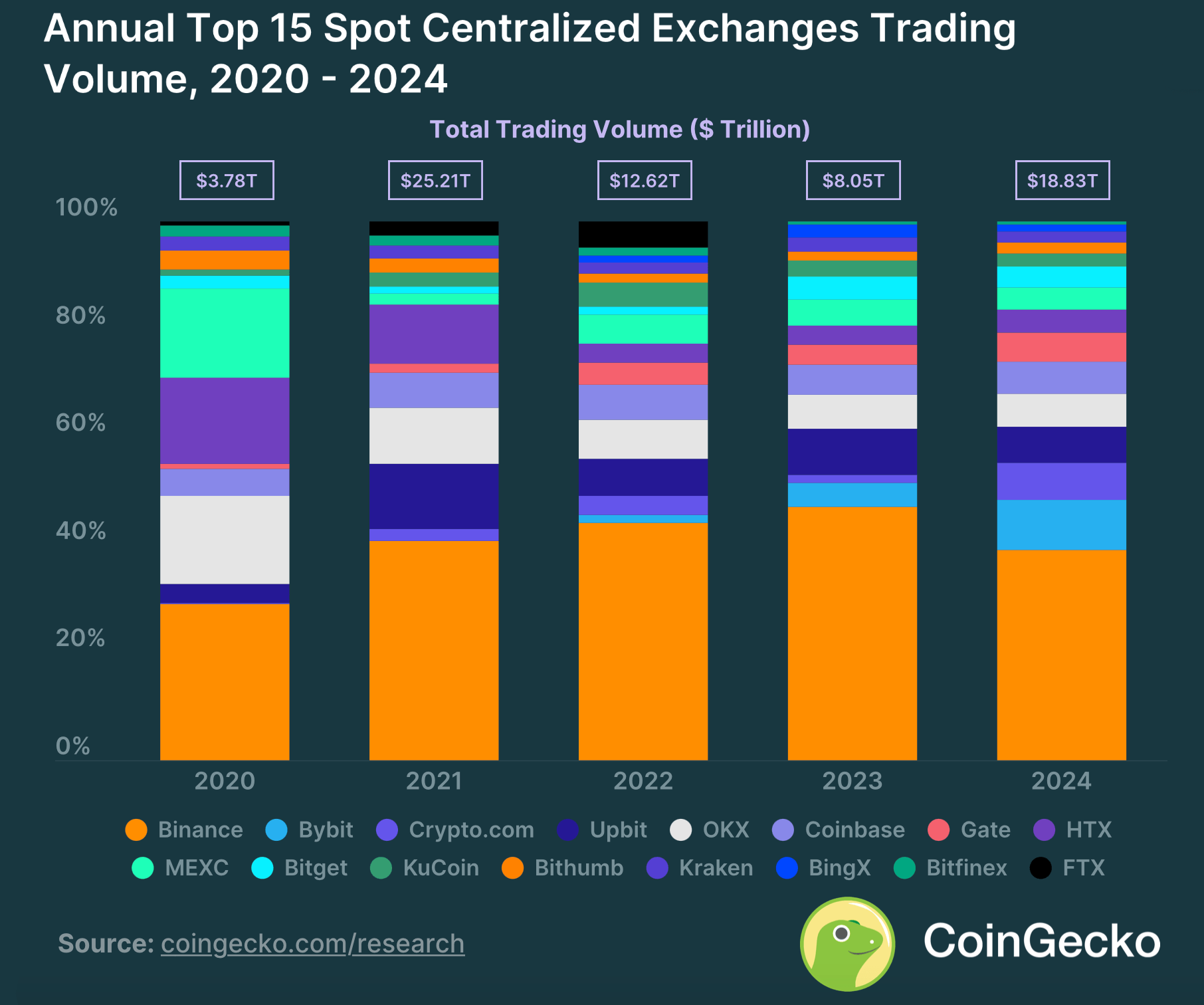
Total centralized exchange volume reached $18.83 trillion, the second-highest in five years, though still below 2021’s record of $25.21 trillion.
2021 Marked by Key Events
In 2024, Binance remained the largest centralized cryptocurrency exchange, despite its share of total trading volume among the top 15 exchanges falling by approximately eight percentage points, from 47% to 39%. Its trading volume nearly doubled to $7.3 trillion.

Overall, centralized exchanges saw $18.83 trillion in trading volume last year, the second-highest total in five years. The 2021 total of $25.21 trillion, according to Coingecko data, remains the record. During that year, a number of notable milestones or events occurred including the surge in altchain activity, the listing of Coinbase on Nasdaq as well as bitcoin hitting the then-all-time high.
Bybit, meanwhile, was the second-largest centralized exchange platform, with trading volume just below $1.75 trillion, or approximately 9.28% of the total. Crypto.com, with a nearly tenfold volume surge to $1.29 trillion, moved into third place. Upbit and OKX rounded out the top five, with $1.258 trillion and $1.172 trillion, respectively.
Seven centralized exchanges had volumes exceeding $1 trillion in 2024. In 2023, only Binance reached that milestone.
Crypto.com was the fastest-growing centralized exchange in 2024, with a 969.7% increase in volume. Bybit and Gate were the second and third fastest-growing, with increases of 397.8% and 241.5%, respectively. OKX (16.3%), HTX (16.0%), and MEXC (16.6%) saw their volume shares decline over the past five years.
By 2024, OKX, HTX, and MEXC were outside the top five, with market shares of 6.2%, 4.4%, and 4.1%, respectively. FTX, the exchange formerly run by Sam Bankman-Fried, accounted for 2.6% of volume in 2021 and 4.8% in 2022 before its collapse.
Source: Bitcoin



